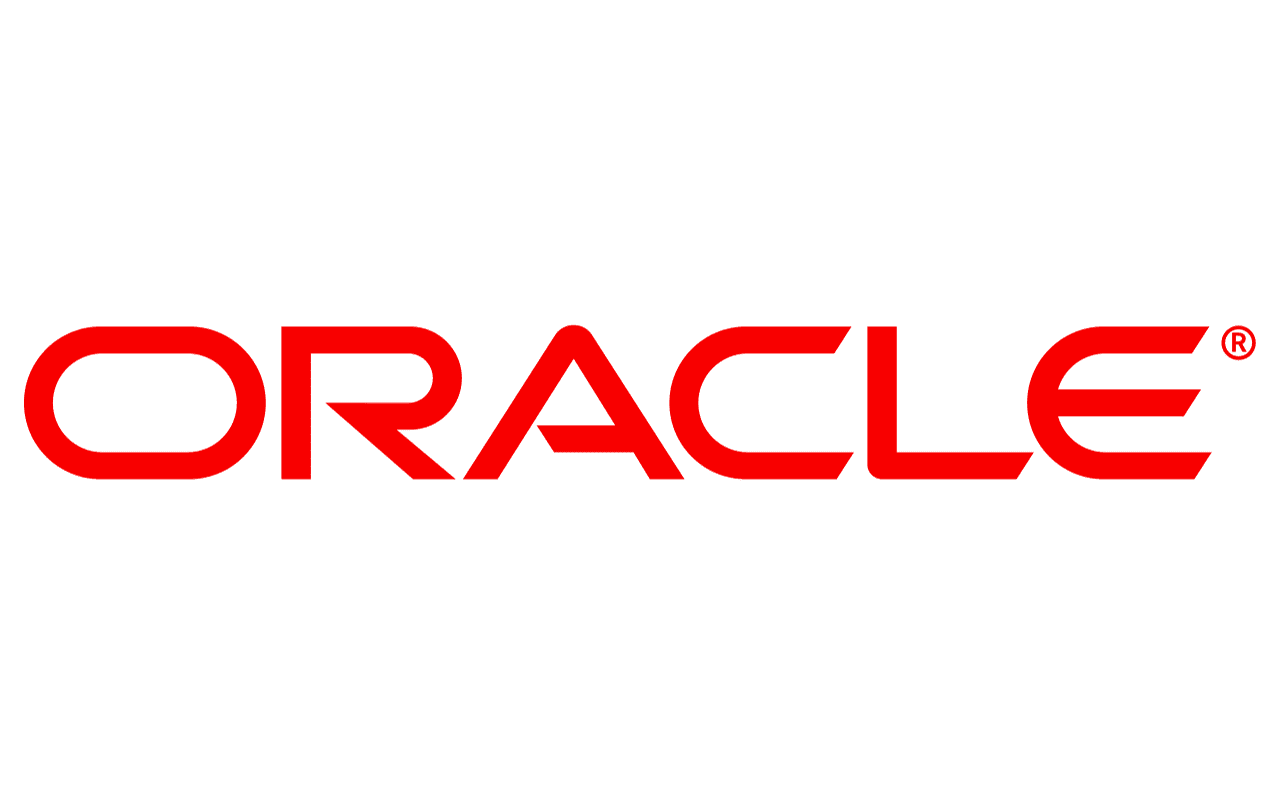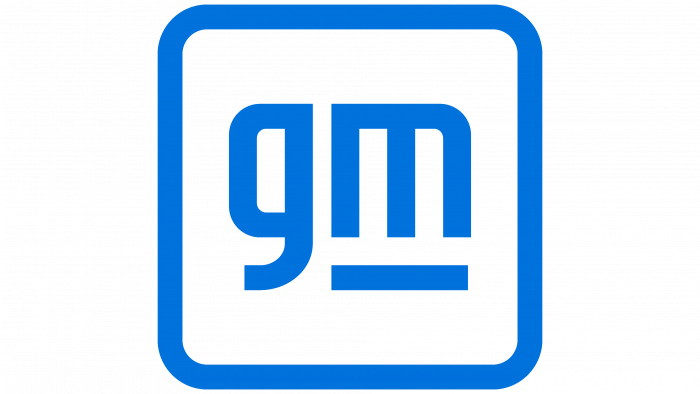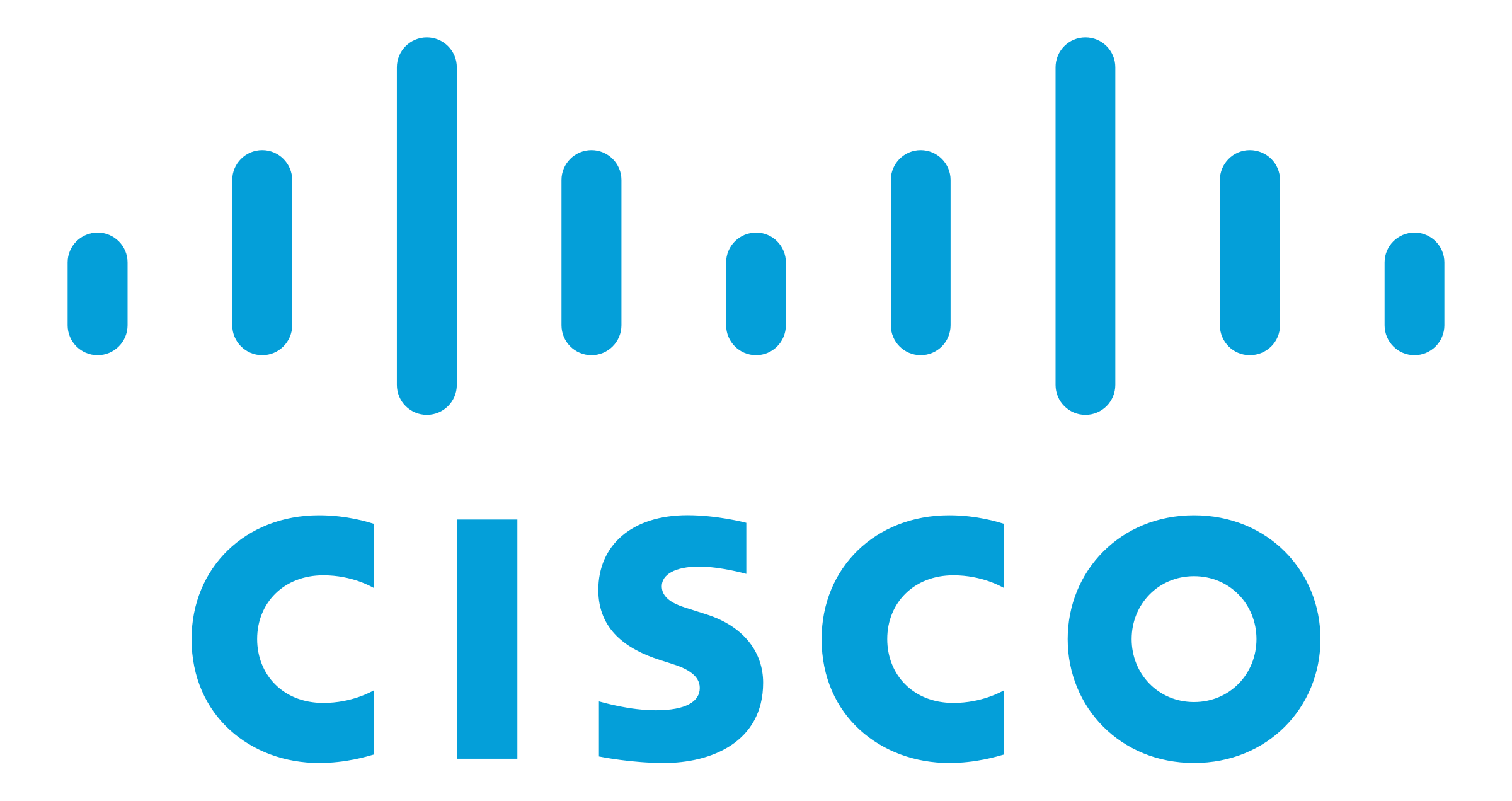How to Become a CTO: A Guide to Technology Leadership in 2023
In today’s fast-paced tech-driven world, the role of a Chief Technology Officer (CTO) is more vital than ever. But what does it take to become a CTO, and how can you prepare yourself for this rewarding and challenging position? In this blog post, we will explore the responsibilities, educational journey, and key competencies needed to become a successful CTO. Get ready to embark on an exciting journey towards technology leadership, as we discuss “how to become a CTO”!
Key Takeaways
- CTOs are responsible for managing technology infrastructure, driving innovation and leading IT teams.
- To become a CTO requires technical proficiency, business acumen and leadership capabilities.
- Aspiring CTOs can build experience by beginning as a developer or engineer progressing into management roles with strong networks and personal brands across varied industries.
Want to save time?
Let us help you land your next CTO position by crafting the best resume or by managing your entire job search. Here’s more information about our C-Level Resume Writing Services and Reverse Recruitment Service. Book a call today to speak directly with our CEO and Founder, Arno Markus!
Industry Stats: According to the U.S. Bureau of Labor Statistics (BLS), the employment of top executives is projected to grow 6% from 2021 to 2031, which is about as fast as the average for all occupations.
The Role of a Chief Technology Officer (CTO)
A Chief Technology Officer, also known as a Chief Technical Officer, holds a pivotal role, responsible for overseeing a company’s technology infrastructure, facilitating innovation, and guiding IT teams to achieve business objectives. In today’s world, where technology is intertwined with every aspect of an organization, the role of chief technology officers is both varied and demanding. To excel in this position, one must possess a unique blend of technical skills, business knowledge, and leadership qualities.
Now, we’ll uncover the responsibilities and key focal points for a CTO.
Defining the Chief Technology Officer's Responsibilities
A CTO shoulders various duties, including:
- Managing IT departments
- Aligning technology with corporate goals
- Ensuring the safety and efficiency of operations
- Communicating the company’s technology strategy
- Aiding in recruitment
- Leading technology teams to execute technology initiatives
As technology continues to evolve at an unprecedented pace, a CTO must stay updated on the latest technology trends and advancements to make informed decisions.
Considering the variety of industries and company sizes, the focus of a CTO may differ from one organization to another. One thing remains constant though: managing and overseeing the company’s technology infrastructure necessitates technical skills. A CTO must be adept at navigating the ever-changing technology landscape to ensure the company stays ahead of the curve.
Crafting a Visionary Technology Strategy
One of the critical responsibilities of a CTO is to create a visionary technology strategy that supports the company’s growth and competitive advantage. This involves recognizing how technology can help a company thrive, and executing achievable changes in accordance with time, budget, and requirements. For a CTO to align technology with organizational goals, business management skills are indispensable.
A visionary technology strategy enables the organization to harness the power of technology and sustain its competitive edge in the market. By staying updated on emerging technologies and industry trends, a CTO can make strategic decisions to drive innovation and growth. In short, the technological future of a company is shaped by the CTO’s vision.Here, we delve into some of the prominent emerging technologies and their implications for CTOs:
- Artificial Intelligence (AI) and Machine Learning (ML):
– The Implication: AI and ML are transforming industries with their ability to analyze vast amounts of data, automate processes, and make predictive decisions.
– Example: CTOs in e-commerce are leveraging AI-powered recommendation engines to personalize user experiences and boost sales.
- Edge Computing:
– The Implication: Edge computing reduces latency by processing data closer to the source, making real-time decisions possible.
– Example: In the Internet of Things (IoT), CTOs are implementing edge computing to enable connected devices to respond swiftly to critical events, such as autonomous vehicles avoiding collisions.
- Quantum Computing:
– The Implication: Quantum computing promises breakthroughs in cryptography, optimization, and simulations that could disrupt various industries.
– Example: CTOs in cybersecurity are closely monitoring quantum computing developments to ensure data encryption remains secure.
- 5G Technology:
– The Implication: 5G networks offer high-speed, low-latency connectivity, enabling innovations like augmented reality (AR) and virtual reality (VR).
– Example: CTOs in telecommunications are exploring the potential of 5G for delivering immersive experiences and IoT applications.
- Blockchain and Distributed Ledger Technology:
– The Implication: These technologies are revolutionizing transparency, security, and trust in various sectors, from supply chain management to finance.
– Example: CTOs in finance are integrating blockchain for secure and efficient cross-border payments.
- Cybersecurity Advancements:
– The Implication: As cyber threats evolve, CTOs must stay vigilant by adopting advanced security measures, such as AI-driven threat detection.
– Example: CTOs in healthcare are implementing advanced cybersecurity solutions to safeguard sensitive patient data in an increasingly digitalized landscape.
- Green Technologies:
– The Implication: Sustainable technology solutions are gaining traction as organizations prioritize environmental responsibility.
– Example: CTOs in manufacturing are implementing energy-efficient processes and renewable energy sources to reduce their carbon footprint.
- Augmented Reality (AR) and Virtual Reality (VR):
– The Implication: AR and VR have transformative potential in fields like education, training, and entertainment.
– Example: CTOs in education are exploring immersive learning experiences through AR and VR applications.
- Robotics and Automation:
– The Implication: Advanced robotics and automation are driving efficiency in manufacturing, logistics, and healthcare.
– Example: CTOs in logistics are optimizing supply chain operations through autonomous drones and robots.
CTOs who proactively embrace these emerging technologies can position their organizations for competitive advantage. However, this pursuit also comes with challenges, such as ensuring data privacy, ethical AI, and cybersecurity resilience. The ability to evaluate the practicality, scalability, and ethical implications of these technologies is paramount for CTOs seeking to drive innovation and maintain a strategic edge. In the ever-evolving tech landscape, adaptability, and a relentless commitment to learning are essential traits for the modern CTO.
Driving Innovation and Nurturing Research
Driving innovation and nurturing research is vital for a CTO to excel in their role. Research capability enables CTOs to identify business needs, find appropriate solutions for new projects, and overcome potential obstacles. In addition to managing the existing technology infrastructure, a CTO must also collaborate with the Chief Product Owner (CPO) to create new products and optimize existing ones to increase revenue and build a brand that encourages customers to purchase from the company.
To foster innovation, CTOs must stay abreast of emerging technologies and promote a culture of research and development. By doing so, they can ensure their organization remains at the forefront of technological advancements, paving the way for continuous growth and success.
- Open Innovation Models:
Open innovation is a paradigm shift from the traditional closed R&D model, where companies collaborate with external partners to co-create solutions. CTOs can adopt various open innovation models to fuel creativity and access a broader pool of expertise:
– Crowdsourcing: Engaging the global community, including customers, developers, and experts, to contribute ideas and solutions. Platforms like InnoCentive and Kaggle facilitate crowdsourcing challenges.
– Hackathons and Innovation Challenges: Hosting events or competitions to solve specific problems, encouraging innovation within and outside the organization.
– Incubators and Accelerators: Collaborating with startup incubators or accelerators to mentor and invest in early-stage companies working on disruptive technologies.
- Ecosystem Partnerships:
CTOs can foster partnerships and collaborations within broader ecosystems to tap into external expertise, technologies, and markets:
– Industry Alliances: Joining industry-specific consortia or alliances to collectively address common challenges and drive industry-wide innovation. Examples include the Industrial Internet Consortium (IIC) for IoT and the Hyperledger project for blockchain.
– Academic Collaborations: Partnering with universities and research institutions for cutting-edge research, talent recruitment, and technology transfer.
– Startup Collaborations: Engaging with startups through strategic partnerships, investments, or acquisitions to access disruptive technologies and entrepreneurial talent.
- Agile Methodologies:
Agile methodologies, such as Scrum and Kanban, promote iterative development, collaboration, and rapid adaptation to changing requirements. CTOs can implement agile practices to enhance innovation:
– Cross-Functional Teams: Assembling multidisciplinary teams that include developers, designers, and business analysts to foster creativity and problem-solving.
– Prototyping and MVPs: Rapidly developing prototypes or minimum viable products (MVPs) to test ideas, gather feedback, and validate concepts with minimal investment.
– Continuous Feedback Loops: Encouraging regular feedback from end-users and stakeholders to fine-tune product development and ensure alignment with market needs.
– DevOps Practices: Integrating development and operations teams to streamline software delivery, reduce bottlenecks, and accelerate innovation cycles.
- Design Thinking:
Design thinking is a human-centered approach to innovation that focuses on empathizing with users, defining problems, ideating solutions, prototyping, and testing. CTOs can implement design thinking principles to drive user-centric innovation:
– User-Centricity: Prioritizing user needs and experiences throughout the product development process to create solutions that resonate with customers.
– Cross-Functional Collaboration: Bringing together diverse teams to foster creative problem-solving and generate a wide range of ideas.
– Rapid Prototyping: Iteratively building and testing prototypes to refine concepts based on user feedback and insights.
- Digital Transformation:
CTOs can drive innovation through digital transformation initiatives that leverage emerging technologies:
– IoT Integration: Connecting products and systems to the Internet of Things (IoT) to gather data, enhance customer experiences, and unlock new business models.
– Big Data Analytics: Leveraging big data and analytics to derive actionable insights, optimize operations, and identify new opportunities.
– Artificial Intelligence and Machine Learning: Implementing AI and ML algorithms for predictive analytics, automation, and personalized recommendations.
- Customer-Centric Innovation:
CTOs should prioritize customer-centric innovation, involving customers in the ideation process, and continuously collecting feedback to iterate and improve products and services.
– Voice of the Customer (VoC): Actively listening to customer feedback, conducting surveys, and using data analytics to gain insights into customer preferences and pain points.
– User Experience (UX) Design: Employing UX principles to create intuitive, user-friendly interfaces that enhance customer satisfaction and loyalty.
In today’s rapidly evolving technological landscape, CTOs need to embrace a holistic approach to innovation that combines these strategies. By fostering a culture of innovation, collaborating with diverse partners, and embracing agile practices, CTOs can position their organizations at the forefront of technological advancement. Innovation is not just a process; it’s a mindset that permeates every aspect of the organization, from leadership to development teams, ensuring long-term competitiveness and relevance.
Effective IT Management and Inspirational Team Leadership
For a CTO to guide and inspire their team to success, effective IT management and inspirational team leadership are key. This involves:
- Motivating staff
- Allocating responsibilities
- Problem-solving
- Ensuring clear communication to articulate technical information to various stakeholders.
Strong motivational skills enable a CTO to unlock the full potential of their team. In addition, effective communication is crucial for a CTO to convey concepts and technical data to both technical and non-technical audiences. By cultivating these essential leadership qualities, a CTO can lead their team to new heights and drive the organization towards its goals.
Let’s explore some complex problems that Chief Technology Officers (CTOs) have tackled and the problem-solving frameworks they employed:
- Scaling Infrastructure for Rapid User Growth:
Problem: A high-growth tech startup experienced exponential user growth, causing performance issues and system downtimes. The CTO needed to scale the infrastructure while maintaining uptime and ensuring data security.
Problem-Solving Framework: The CTO adopted a combination of strategies:
– Load Balancing: Implemented load balancing solutions to distribute traffic across multiple servers, optimizing performance and redundancy.
– Cloud Adoption: Migrated to cloud platforms like AWS or Azure for elasticity and scalability, allowing the infrastructure to expand dynamically based on demand.
– Microservices Architecture: Decomposed monolithic applications into microservices to enable independent scaling and fault isolation.
– DevOps Practices: Implemented DevOps methodologies for automated deployment, continuous monitoring, and rapid issue resolution.
- Cybersecurity Threat Mitigation:
Problem: A large enterprise faced a series of sophisticated cyberattacks that threatened sensitive data and system integrity. The CTO needed to enhance cybersecurity defenses and incident response.
Problem-Solving Framework: The CTO employed a comprehensive cybersecurity framework:
– Security Audits: Conducted thorough security audits and penetration testing to identify vulnerabilities and weaknesses.
– Zero Trust Architecture: Implemented a zero-trust security model, assuming that threats could come from both external and internal sources.
– AI-Powered Threat Detection: Deployed AI-driven security solutions to detect anomalies, malicious activities, and advanced persistent threats (APTs).
– Incident Response Plan: Developed a robust incident response plan with defined roles, communication procedures, and post-incident analysis.
- Legacy System Modernization:
Problem: A well-established organization relied on legacy systems that hindered agility and competitiveness. The CTO needed to modernize legacy infrastructure without disrupting critical operations.
Problem-Solving Framework: The CTO implemented a strategic modernization approach:
– Legacy Assessment: Conducted a comprehensive assessment of existing systems to identify outdated technologies and dependencies.
– Containerization: Leveraged containerization (e.g., Docker) to encapsulate legacy applications, making them more portable and easier to manage.
– Microservices Transition: Gradually transitioned from monolithic architecture to microservices, enabling incremental modernization.
– API Integration: Implemented APIs to bridge legacy systems with modern applications, facilitating data flow and interoperability.
- Enhancing Data Analytics Capabilities:
Problem: A data-driven organization faced challenges in harnessing the full potential of its data due to disparate data sources and outdated analytics tools. The CTO aimed to revamp data analytics capabilities.
Problem-Solving Framework: The CTO adopted a data-driven framework:
– Data Lake Implementation: Established a data lake to consolidate diverse data sources, allowing for unified data storage and accessibility.
– Data Warehousing: Implemented data warehousing solutions (e.g., Snowflake) for structured data analysis and reporting.
– Advanced Analytics Tools: Deployed modern analytics tools like Tableau, Power BI, or custom solutions with machine learning capabilities.
– Data Governance: Instituted robust data governance practices to ensure data quality, compliance, and security.
- Product Innovation and Market Expansion:
Problem: An established tech company sought to diversify its product portfolio and enter new markets to sustain growth. The CTO needed to drive innovation and market expansion.
Problem-Solving Framework: The CTO executed a strategic framework:
– Market Research: Conducted in-depth market research to identify emerging trends, customer needs, and growth opportunities.
– Cross-Functional Innovation Teams: Formed cross-functional teams involving R&D, marketing, and design to brainstorm and prototype new product ideas.
– Agile Development: Embraced agile methodologies to accelerate product development cycles, iterate based on user feedback, and launch new products quickly.
– Partnerships and M&A: Explored strategic partnerships, acquisitions, or investments to access new technologies, customer bases, or distribution channels.
- Ensuring Regulatory Compliance:
Problem: A fintech company faced evolving regulatory requirements and compliance challenges. The CTO needed to ensure that technology systems aligned with changing regulations.
Problem-Solving Framework: The CTO adopted a compliance-oriented framework:
– Regulatory Analysis: Stayed updated on industry-specific regulations and conducted impact assessments on technology systems.
– Automated Compliance Monitoring: Implemented automated compliance monitoring and reporting tools to track adherence to regulations.
– Cross-Functional Compliance Teams: Collaborated with legal, compliance, and audit teams to establish clear compliance processes and documentation.
– Blockchain and Smart Contracts: Explored blockchain technology and smart contracts for transparent, immutable, and automated compliance verification.
These examples demonstrate the multifaceted challenges that CTOs encounter and the problem-solving frameworks they apply to address them.
The Educational Journey to CTO
The path to becoming a CTO begins with a solid educational foundation. Acquiring a bachelor’s degree, a master’s degree, and relevant certifications are pivotal milestones on this journey. By obtaining these qualifications, aspiring CTOs can develop the necessary skills and knowledge to excel in their field.
We’ll examine the educational journey in greater depth.
Pursuing a Bachelor's Degree in Computer Science or a Relevant Field
A bachelor’s degree in computer science or a related field is an essential prerequisite for aspiring CTOs. This foundational education allows them to acquire the technical proficiency required to navigate the complex world of technology and develop a deep understanding of computer science fundamentals.
In addition to computer science, aspiring CTOs can also consider degrees in information technology, software engineering, or other related fields. For example, future CTOs can be prepared to safeguard digital assets and manage security risks through courses in cybersecurity incident response and assessment.
No matter what specific degree one pursues, a bachelor’s education lays the groundwork for a successful career in technology leadership.
Mastering Business Administration or IT Management with a Master's Degree
While technical skills are undoubtedly vital for a CTO, mastering business administration or IT management with a master’s degree can help bridge the gap between the technical and business worlds. A master’s program that focuses on the technical aspects of business administration, such as an online cybersecurity master’s, can assist students in honing their skills in management-related disciplines, such as accounting and finance.
Pursuing an MBA degree can provide aspiring CTOs with a competitive edge and help them develop a well-rounded understanding of both the technical and business realms. When selecting an MBA program, technology professionals should consider factors such as the necessity of leaving employment, the amount of dedication required, and the potential impact on their career.
Gaining Industry-Recognized Certifications
Gaining industry-recognized certifications can play a crucial role in boosting the credibility of aspiring CTOs and showcasing their proficiency in specific areas. These credentials, acknowledged by employers, validate skill attainment in a particular industry and can potentially increase career opportunities.
Beneficial certifications for CTO candidates include AWS Certification, MCSE and CCNP. These certifications demonstrate an in-depth understanding of various cloud computing and networking services. By obtaining these industry-specific software certifications, aspiring CTOs can demonstrate their expertise and commitment to staying current with technological advancements.
- Certified Information Systems Security Professional (CISSP): CISSP is an advanced cybersecurity certification that focuses on information security management and expertise. CTOs can benefit from CISSP to deepen their knowledge of security strategies, risk management, and security architecture.
- Certified Cloud Security Professional (CCSP): As cloud technology becomes integral to modern businesses, CTOs can pursue the CCSP certification to gain expertise in cloud security, including cloud architecture, governance, risk management, and compliance.
- Certified ScrumMaster (CSM) and Certified Scrum Professional (CSP): For CTOs leading Agile development teams, CSM and CSP certifications can enhance their Agile leadership and project management skills, facilitating efficient product development and innovation.
- Certified Information Systems Manager (CISM): CISM is a certification focused on information risk management and governance. CTOs can leverage CISM to strengthen their ability to manage information security programs and align them with business goals.
- AWS Certified Solutions Architect – Professional: Particularly beneficial for CTOs working with Amazon Web Services, this certification validates advanced cloud architecture and design skills, helping CTOs optimize cloud strategies and infrastructure.
- Microsoft Certified: Azure Solutions Architect Expert: For CTOs using Azure, this certification demonstrates expertise in designing scalable, secure, and reliable solutions on Microsoft Azure. It’s especially valuable for those in organizations that rely on Azure cloud services.
- Project Management Professional (PMP): While often associated with project managers, CTOs overseeing complex technology initiatives can benefit from PMP certification to enhance their project management and leadership skills.
- MIT Sloan Advanced Management Program: This executive education program provides senior leaders, including CTOs, with advanced management insights, strategic thinking, and leadership development at the renowned MIT Sloan School of Management.
- Stanford Advanced Project Management (SAPM) Program: Stanford’s SAPM program is designed for experienced technology leaders and CTOs looking to sharpen their project management skills and drive successful technology projects.
- Harvard Business School Executive Education: CTOs can explore a range of executive education programs at Harvard Business School, focusing on innovation, digital transformation, and leadership development tailored to senior technology executives.
- MIT Professional Education – Artificial Intelligence: As AI and machine learning play an increasingly significant role in technology, MIT offers specialized programs for CTOs to delve deep into AI strategies, applications, and ethical considerations.
- INSEAD Advanced Management Program (AMP): INSEAD’s AMP is a global leadership development program designed for C-suite executives, including CTOs, seeking to broaden their strategic perspectives and drive organizational transformation.
These advanced certifications and programs can empower CTOs to stay ahead in their field, whether they’re focused on cybersecurity, cloud technology, Agile development, information management, or broader leadership and management skills. Continuous learning and specialization are key to remaining at the forefront of technology leadership.
The Key Competencies of a Successful CTO
To excel as a CTO, one must possess a unique blend of competencies that encompass:
- Technical proficiency
- Interpersonal skills
- Business savvy
- Strategic insight
- Exemplary leadership capabilities
Now, we’ll delve into each of these competencies and understand how they contribute to a successful CTO.
Technical Expertise
Technical expertise is essential for CTOs to manage technology infrastructure and stay updated on industry trends. This entails proficiency in:
- IT infrastructure
- Security
- Asset management
- Help desk support
- Research and development
As the technology landscape continues to evolve, CTOs must possess a comprehensive understanding of past, present, and emerging technologies, including frameworks and programming languages.
CTOs must be committed to continuous learning and professional development to maintain their technical expertise. This includes staying informed about advancements in the industry, attending conferences, and participating in ongoing training and certification programs.
Fostering Technical Expertise and Staying Current
Data analytics, artificial intelligence (AI), and machine learning (ML) play pivotal roles in modern technology leadership. These technologies enable CTOs to make informed decisions, drive innovation, and enhance operational efficiency. Here are some examples of how data-driven decisions have positively impacted organizations:
- Predictive Maintenance in Manufacturing:
– Role: AI and data analytics are used to predict when machines and equipment are likely to fail, allowing for proactive maintenance.
– Impact: Reduced downtime, increased operational efficiency, and significant cost savings.
- Personalized Marketing in E-commerce:
– Role: AI-driven recommendation engines analyze user behavior and preferences to suggest products.
– Impact: Higher conversion rates, increased customer satisfaction, and improved sales.
- Fraud Detection in Banking:
– Role: Machine learning models analyze transaction data to identify suspicious patterns.
– Impact: Reduced fraud losses, enhanced security, and improved customer trust.
- Healthcare Diagnostics:
– Role: AI algorithms analyze medical images, genomic data, and patient records to assist in disease diagnosis.
– Impact: Earlier disease detection, improved treatment planning, and enhanced patient outcomes.
- Supply Chain Optimization:
– Role: Data analytics and AI optimize supply chain logistics, helping companies manage inventory efficiently.
– Impact: Reduced costs, minimized stockouts, and improved order fulfillment.
- Customer Support Chatbots:
– Role: AI-powered chatbots handle routine customer inquiries, freeing up human agents for more complex issues.
– Impact: Faster response times, 24/7 support availability, and cost savings.
- Energy Management in Smart Buildings:
– Role: IoT sensors collect data on energy consumption, while AI analyzes patterns and optimizes energy use.
– Impact: Reduced energy costs, lower carbon footprint, and sustainability improvements.
- Talent Acquisition:
– Role: AI-driven tools analyze resumes, assess candidates, and predict their suitability for specific roles.
– Impact: Faster recruitment, improved candidate matching, and reduced bias.
- Content Personalization in Media:
– Role: AI analyzes user preferences and behavior to deliver personalized content recommendations.
– Impact: Increased user engagement, longer session durations, and improved content monetization.
- Autonomous Vehicles:
– Role: AI and ML algorithms process sensor data to make real-time driving decisions in autonomous vehicles.
– Impact: Improved road safety, reduced accidents, and the potential for more efficient transportation systems.
In these examples, data-driven decisions, enabled by AI and data analytics, have led to improved efficiency, cost savings, better customer experiences, and even life-saving applications. CTOs who leverage these technologies can drive innovation and competitive advantages in their respective industries while ensuring their organizations stay at the forefront of technological advancements.
Soft Skills and Leadership Abilities
Soft skills and leadership abilities that are crucial for a CTO include:
- Excellent communication skills
- Problem-solving capabilities
- Decision-making abilities
- The ability to motivate and guide teams
These skills are essential for fostering a collaborative and productive work environment.
To cultivate soft skills and leadership abilities, CTOs can engage in mentorship programs, provide clear objectives, and promote collaboration within their teams. By honing these essential qualities, a CTO can establish trust, promote collaboration, and create a positive work atmosphere that drives the organization towards success.
Here are some advanced leadership theories and their relevance to Chief Technology Officers:
- Transformational Leadership:
CTOs can use transformational leadership to foster innovation and encourage their IT teams to think creatively. By inspiring a sense of purpose and aligning technology initiatives with the company’s vision, CTOs can drive positive change.
- Servant Leadership:
CTOs can apply servant leadership by actively listening to their teams, removing obstacles, and providing the necessary resources for success. This approach can enhance collaboration, employee satisfaction, and overall team effectiveness.
- Adaptive Leadership:
CTOs often face rapidly evolving technological landscapes. Adaptive leadership enables them to navigate uncertainty, make informed decisions, and guide their teams through digital transformations and disruptions.
- Ethical Leadership:
CTOs must consider ethical implications in technology, such as data privacy and cybersecurity. Ethical leadership ensures that technology initiatives align with ethical standards, legal requirements, and societal expectations.
- Situational Leadership:
CTOs can use situational leadership to tailor their approach when leading diverse teams with varying levels of technical expertise. Adapting leadership to the specific needs of each team member can enhance performance and development.
- Complexity Leadership:
CTOs dealing with complex IT projects or digital transformations can benefit from complexity leadership. It involves embracing uncertainty, promoting self-organization, and facilitating collaboration among team members to address intricate issues.
- Authentic Leadership:
CTOs can enhance their credibility and foster trust within their teams by practicing authentic leadership. Authenticity encourages open communication, honest feedback, and a culture of trust, all of which are essential in technology leadership.
- Laissez-Faire Leadership:
CTOs can adopt a laissez-faire approach when leading highly skilled and self-motivated technical teams. Providing autonomy can empower team members to take ownership of projects and drive innovation.
By applying these advanced leadership theories, CTOs can create dynamic, innovative, and ethical technology teams. Effective technology leadership goes beyond technical expertise, and these theories offer valuable frameworks to navigate the complex challenges and opportunities in the ever-evolving technology landscape.
Embracing Business Acumen and Strategic Vision
Embracing business acumen and strategic vision helps CTOs align technology with business goals and drive growth. Some key benefits of developing business acumen and strategic vision include:
- Comprehending the operations of businesses
- Identifying challenges
- Devising effective solutions
- Making informed decisions that support the company’s expansion and competitive edge
Developing business acumen and strategic thinking can be achieved through continuous learning, participating in industry events, and seeking mentorship from experienced professionals. By cultivating these skills, CTOs can ensure that technology is used effectively to meet organizational objectives and facilitate growth.
Diving deeper into advanced strategic frameworks and methodologies is crucial for CTOs to effectively align technology with business goals. Here are some advanced strategic frameworks and approaches that CTOs can employ:
- Blue Ocean Strategy:
– Framework: Blue Ocean Strategy encourages organizations to seek uncontested market spaces (blue oceans) instead of competing in saturated markets (red oceans).
– Application: CTOs can use this framework to identify untapped technological opportunities that create new market spaces. By innovating and introducing disruptive technologies, they can lead their companies into blue oceans, where competition is minimal, and growth potential is high.
- Design Thinking:
– Framework: Design Thinking is a human-centered approach to problem-solving that focuses on empathy, ideation, and prototyping.
– Application: CTOs can apply Design Thinking to technology innovation by understanding user needs, brainstorming innovative solutions, and rapidly prototyping technology products or services. This approach ensures technology solutions are user-centric and meet real-world needs.
- Business Ecosystem Mapping:
– Framework: Business ecosystem mapping helps visualize an organization’s relationships with various stakeholders, including partners, suppliers, and customers.
– Application: CTOs can use ecosystem mapping to identify opportunities for collaboration, strategic partnerships, and ecosystem development. It allows them to align technology initiatives with the broader ecosystem to drive innovation and growth.
- Scenario Planning:
– Framework: Scenario planning involves creating multiple future scenarios to anticipate and prepare for a range of possible outcomes.
– Application: CTOs can employ scenario planning to assess the impact of technological trends, disruptions, and uncertainties on their organizations. By developing strategies for different scenarios, they can make informed decisions and adapt to changing circumstances effectively.
- Lean Startup Methodology:
– Framework: The Lean Startup methodology emphasizes iterative development, validated learning, and building a minimum viable product (MVP) to test ideas quickly.
– Application: CTOs can leverage the Lean Startup approach to minimize risks when introducing new technologies. By developing MVPs and conducting rapid experiments, they can validate assumptions, gather user feedback, and refine their technology strategies.
- Technology Roadmapping:
– Framework: Technology roadmapping involves creating a visual representation of an organization’s technology development plans over time.
– Application: CTOs can use technology roadmaps to align technology investments with strategic objectives. By outlining the evolution of technology capabilities, they can ensure that technology initiatives support long-term business goals.
- Platform Strategy:
– Framework: Platform strategy involves building and managing technology platforms that enable ecosystems of developers, partners, and users.
– Application: CTOs can adopt a platform strategy to create technology ecosystems around their products or services. This approach fosters innovation, extends market reach, and enhances the scalability of technology solutions.
- Real Options Analysis:
– Framework: Real Options Analysis applies financial options theory to technology investments, allowing organizations to assess and manage the uncertainty of technology projects.
– Application: CTOs can use real options analysis to evaluate technology investments and make decisions that account for uncertainty and changing market conditions. It provides a structured approach to technology portfolio management.
- Strategic Innovation Framework:
– Framework: The Strategic Innovation Framework combines innovation and strategy to drive sustainable growth.
– Application: CTOs can integrate this framework into their technology strategies by emphasizing the continuous exploration of innovative technologies, fostering a culture of innovation, and aligning technology initiatives with long-term strategic goals.
These advanced strategic frameworks and methodologies empower CTOs to navigate the complexities of the technology landscape while strategically aligning their efforts with the broader business objectives. By leveraging these approaches, CTOs can drive innovation, enhance competitiveness, and create long-term value for their organizations.
Ascending the Ladder: Building Experience for CTO Aspirants
Building experience for CTO aspirants involves starting as a developer or engineer, progressing into management positions, and cultivating a professional network. By following this path, you can develop the necessary skills, knowledge, and connections to reach the coveted CTO position.
We’ll examine each step in greater depth.
Commencing as a Software Developer or Engineer
Aspiring CTOs often begin their careers as software developers or engineers to gain technical expertise. This foundational experience enables them to sharpen their problem-solving capabilities and familiarize themselves with various aspects of software development, including coding languages, software development processes, and web technologies.
Software developers can pursue various career paths, such as software architects, software engineers, or software project managers. They can also specialize in fields like mobile app development, web development, and DevOps engineering. By starting in these roles, aspiring CTOs can establish a strong technical foundation, paving the way for future success in technology leadership.
Progressing into Management Positions
As CTO aspirants accumulate technical expertise, they must also progress into management positions to develop leadership and business skills. These roles provide the opportunity to hone their ability to guide teams, make strategic decisions, and align technology with organizational goals.
To move into managerial roles, aspiring CTOs should concentrate on refining their technical proficiency, business knowledge, strategic insight, and exceptional leadership capabilities.
Progressing into management positions also allows CTO aspirants to gain experience in various IT-related managerial and directorial roles, such as project management, IT operations management, and IT strategy development. With a minimum of five to ten years of experience, professionals can then apply for managerial or directorial roles, further advancing their journey towards the CTO position.
Cultivating a Robust Professional Network and Establishing a Stellar Personal Brand
Building a strong professional network and crafting a stellar personal brand are key steps in the journey to become a CTO. A strong network provides access to new opportunities, guidance, and advice from professionals in the same sector. Additionally, it helps aspiring CTOs stay updated on industry trends and developments, enhancing their visibility and credibility in the field.
To build connections, aspiring CTOs can join career networks, attend industry events, and participate in online forums and social media groups. Establishing a personal brand involves showcasing expertise through thought leadership, such as writing articles, giving talks, and engaging in panel discussions.
Investing time and effort into networking and personal branding can help aspiring CTOs distinguish themselves in the industry and set the stage for a successful CTO career.
Exploring CTO Roles Across Varied Industries
CTO roles can be found across various industries, including:
- Finance
- Healthcare
- Retail
- Technology
These industries offer diverse opportunities for aspiring technology leaders. The growing relevance of technology in business operations has contributed to the high demand for CTOs across many industries.
This diversity of opportunities allows aspiring CTOs to leverage their technical and leadership skills in a multitude of contexts, expanding their knowledge and experience while making a meaningful impact in their chosen field.
Equipping Yourself to Tackle CTO Challenges Head-On
While becoming a CTO is no easy task, it’s achievable by arming yourself with the appropriate competencies, education, and experience to confront CTO challenges head-on. This involves:
- Maintaining a commitment to learning
- Staying informed about developments in the industry
- Cultivating a comprehensive set of skills to effectively manage technology teams and facilitate business growth.
In doing so, you’re well-positioned to embrace the challenges of the CTO role and steer your organization towards success.
Summary
In conclusion, the journey to becoming a CTO is both challenging and rewarding. By understanding the responsibilities of a CTO, pursuing the right educational path, developing key competencies, building experience, and exploring opportunities across industries, aspiring CTOs can pave the way for a successful career in technology leadership. Remember, the road to becoming a CTO requires dedication, hard work, and a commitment to continuous learning. Embrace the journey and unleash your potential to make a lasting impact on the world of technology.
Frequently Asked Questions
Becoming a CTO takes extensive knowledge and experience in the IT field. Usually one must possess at least 15 years of professional experience in the field, in addition to a bachelor’s and/or master’s degree, before they can apply for the job. It is not an easy task to become a CTO, as it requires knowledge, experience and hard work.
To become a CTO, you need to obtain a bachelor’s and master’s degree in a related field, pursue extended professional development, gain 10+ years of work experience in various IT roles, acquire additional certifications, and develop leadership, people, and team management skills.
While a degree is necessary to become a CTO, it is only one aspect of the requirements. Real-world work experience and a graduate degree may be required as well. Therefore, while it is possible to become a CTO without a degree, the likelihood of success is small
A CEO is at the highest position in a company, supervising overall operations and ranking higher than a CTO who oversees the organization’s technical staff. The CTO usually reports directly to the CEO and can discuss any issues with other C-level executives or board members.
Becoming a CTO requires obtaining a bachelor’s degree, master’s degree, and relevant certifications.
About iCareerSolutions
iCareerSolutions, America’s #1 Executive and Professional Resume Writing Services, Reverse Recruitment, and LinkedIn Profile Development Company. 28X award-winning resume writers deliver professional resumes that get interviews. We have successfully landed our executive clients senior-level leadership positions at companies like Apple, Amazon, EA, Oracle, GM, Google, Facebook, DoJ, Gap, and 2U just to name a few. iCareerSolutions has 200+ 5-star reviews and offers a 60-day interview guarantee. Every resume template created is Applicant Tracking Systems (ATS) compatible and highly customized to meet your unique needs.
Active Members of The National Resume Writers’ Association (NRWA) │ The Professional Association of Resume Writers & Career Coaches (PARW&CC) │ Career Directors International (CDI) │ Career Professionals (CPC) │ Forbes Coaches Council
One of the Top Multi-Award-Winning Resume Writing Services in the country.
Book a complimentary consultation for your Professionally Managed Job Search now!


Employers who have Onboarded Our Clients






































